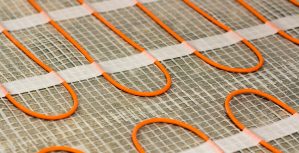How Headless CMS Supports Core Web Vitals Improvements Without a Redesign
Core Web Vitals represents essential metrics for user experience and SEO. These elements not only influence search engine ranking on Google but also user interaction and contentment. They ultimately position a site in Google’s recommendation arsenal or lack thereof. But the good news is that over the years, countless fixes have been found to improve LCP, FID, and CLS. However, it’s usually an incremental improvement and an entire site redo to change anything meaningfully. But with a headless CMS, organisations have the chance to enhance their Core Web Vitals without a full site redesign or disturbance of an already successful and established web presence.
What Are Core Web Vitals and Why They Matter?
Core Web Vitals are specific metrics established by Google that focus on load time (LCP), interactivity (FID), and stability (CLS). They are highly related to the satisfaction of user experience and, thus, are integral components of search ranking. Improve your digital content with a headless CMS, as these systems inherently support the optimisation of Core Web Vitals through faster load speeds and smoother content delivery. Therefore, those companies who try to fulfill expectations of these metrics in real life almost always have better SEO rankings, better UX, and amazing web experiences over time without needing adjustments or changes in design/aesthetics.
The Need for a Headless CMS Allows Quicker Presentation of Content Delivery.
A Headless CMS means that the content is separated from the display element. Therefore, load times for CMS can be adjusted without concern for what’s being seen on the front end. The development team can compartmentalise how content is shown without concern for how it looks, meaning LCP scores can dramatically improve based on caching, CDNs, and ideal image load pipelines. With image load pipelines separated from visual design intention, there is a guaranteed opportunity to improve load times without any adjustments made to visuals/themes.
Reduction of Input Delay through Optimisation of APIs.
First Input Delay measures how quickly a site responds to action. Within a headless CMS, the front end responds and executes independent of the back end. Thus, when developers refine the APIs/input variables that connect the two sections, they can simplify information processing which improves FID. Batching requests, caching, and minimising render-blocking resources ensures data is processed much more quickly, which improves interactivity without any adjustments made to visual aesthetics.
Less Layout Shift with More Predictable Content Models
Cumulative Layout Shift (CLS) tracks how stable content is as a page loads. This is less of a concern for implementations that utilise a Headless CMS because more predictable and structured content models reduce the likelihood of unexpected rendering/loading. For example, content that dynamically generates or for less predictable articles may run into trouble where content moves or falls out of place. But because a Headless CMS provides more predictable content generation clear mappings of what content renders where, the size of images, and the rendering of extensive tags is more consistent those implementations using a Headless CMS typically have far less to worry about regarding CLS without having to change any existing designs in place since it just means elements remain fixed and orderly upon rendering in the first place. This creates a more reliable experience for users.
SSR Plays Nice with Headless
The Headless CMS approach also plays nicely with another way in which content can be generated on the web: Server-Side Rendering (SSR). SSR serves HTML/content to the browser that’s rendered prior to arriving at the user’s site as opposed to only relying on client-side JavaScript to build the pages. Therefore, the browser can load content much faster. This technique greatly benefits LCP and FID metrics. Therefore, organisations do not even need to revamp a layout or elements on a site; by enabling SSR processing, their performance will improve tremendously without client-side loading lags.
Independently Optimising Image Assets Without Design Requirement
Images are often the highest input for LCP scores. But with a Headless CMS, organisations can independently generate image assets using new formats, responsive formats, compression generation, etc. This independent optimisation can reduce overall file size drastically as generation can occur without any design requirement. What a website template to host may matter does not matter because the images will be automatically generated regardless. Therefore, Headless CMS implementations can control their LCP without having to change anything about their page designs, and their performance and Core Web Vitals will thank them.
Improved CSS and JS Delivery
CSS and JS delivery is improved for better performance in Core Web Vitals, especially render-blocking resources. With a Headless CMS, developers get to control how resources are delivered, regardless of what’s shown on the front end. For example, critical CSS inlining, deferring JS loading, and code-splitting can significantly improve load times and engagement as far as LCP and FID performance metrics are concerned and this can be achieved without disrupting what users see now or the structure of the pages.
CDN Integration for Optimal Asset Delivery
Integrating with a Headless CMS and a Content Delivery Network (CDN) increases Core Web Vitals by allowing assets and content to be pulled and loaded faster from international locations. Latency is reduced when access is given to a location far away from the main server which means improved potential for optimal load times. FID and LCP metrics are improved because every user has the same potential for quick access, regardless of standard location, without latency bumps in the road creating ACL variances. CDNs also ensure assets and content are delivered efficiently, improving Core Web Vitals without any adjustments or structural or visual changes to the current site.
Less Overhead Means Better Performance
API design possibilities are highly efficient with a Headless CMS that reduces overhead and responsiveness for anything that impacts FID scores. For example, some Headless CMS may offer possibilities that allow developers to create simpler queries that streamline API access, meaning content loading and retrieval can occur much faster. This reduction in overhead latency increases interactivity faster than expected, improving Core Web Vitals without extensive changes to front-end design and UX.
Future Monitoring and Additional Performance Improvements
Future monitoring and additional performance improvements can come from the fact that Core Web Vitals scoring can be maintained from ongoing efforts. Where new bugs or opportunities for improvements may arise, simply accessing the performance reporting and monitoring tools is easy with the headless CMS implementation, as developers will easily identify early performance red flags to rectify them before they become larger issues. Therefore, this solution allows for continued improvements and high scores over time without the need for extensive redesign or major architectural changes.
Automation of Performance Improvements
Various performance improvement actions can be automated when utilising a headless CMS architecture, such as image and video optimisation, asset/script optimisation, caching, and content versioning. With the incorporation of CI/CD pipelines to establish which parts of the headless CMS work with one another and rely on one another, automation means that standards for performance are established and executed quickly for all users for optimised experiences without ongoing human input. Therefore, enterprises can improve their Core Web Vitals this way and keep a standard over time, continually improving UX without taking a live site down or having to conduct site-wide redesigns.
Scalability and Flexibility Are Easier Because of Decoupled Architecture
The fact that a headless CMS is a decoupled architecture, in and of itself, makes it a more scalable and flexible option when it comes to performance improvements for Core Web Vitals. Since front-end experiences are not tied to back-end systems, although they easily integrate, performance improvements do not have to worry about how they might affect visual rendering, as those templates and layouts do not have to change. Therefore, organisations can quickly adopt performance improvements when using a headless CMS without worrying about needing extensive website redesigns.
Enhanced SEO Exposure Without Needing Redesigns for Core Web Vitals
Many redesigns are prompted by the need to improve Core Web Vitals, which positively impact SEO exposure. Utilising the power behind headless CMS from content modeling and asset delivery to rendering and beyond organisations improve requisite factors of user experience that search engines care about. When companies can keep the same look and feel (the designs) or achieve better scores without needing redesigns for Core Web Vitals, it means continuous SEO improvements, additional organic visitors to the site, and better rankings without the dedicated resources of a site overhaul.
Ongoing Developer Training for Continuous Optimisations
When a company offers ongoing training for its development team, this means performance optimisation will always be applied to future implementations to keep Core Web Vitals in check over time. Teaching developers how to think about performance, how to build the best APIs possible, how to best manage assets, and content delivery through organised outlines promotes the necessity of ongoing performance enhancements effectively. This directly impacts Core Web Vitals improvements and enables companies to maintain them without any need for redesigns or overhauls.
Edge Computing Provides Faster Rendering of Content, More Often
Edge computing is directly related to the headless CMS as computations occur closer to the user, which helps with latency and empowers scoring from Core Web Vitals. By rendering (or caching) things on servers to which a user may be located geographically near, websites provide faster load times, faster times to interactivity, and reduced latency. This immediacy satisfies Largest Contentful Paint (LCP) and First Input Delay (FID), providing all necessary enhancements for effective experiences without needing a tremendous redesign.
Improved Resource Prioritisation for Performance Improvement
Prioritisation of resources means that more important things are loaded first. This can significantly improve perceived performance as well as Core Web Vitals scores. With a headless CMS, certain areas of resource loading accessibility may become available that would not otherwise be seen with a stringent front end. Thus, important content and images load first along with necessary scripts and CSS, and other resources can load as they become available. This aids in improvements of LCP and FID scores and general performance improvements and usability without having to overly adjust visual factors or make major changes to the design.
Incremental Static Regeneration for Dynamic Offerings
One of the perks of headless CMS use is Incremental Static Regeneration (ISR). This provides the best of both worlds when it comes to static and dynamic rendering. ISR provides quicker reloading options without requiring a full reloading that is often necessary. With a headless CMS, ISR can provide the blending of all content while simultaneously offering quick reload opportunities for select pieces so dynamic content can load faster and better. ISR allows for freshness, speed, and scalability which allows for better Core Web Vitals scores and usability without needing to create a new front end from the ground up.
Conclusion: Achieving Better Core Web Vitals Efficiently with Headless CMS
Thus, headless CMS solutions allow organisations to dramatically improve Core Web Vitals with a relatively simple, independent solution versus needing to worry about an extensive redesign down the line. The comparison of simpler access to improve overall site performance versus learned dependency is immense. When teams have access to the CMS and subsequently, an all-in-one hosted environment or an all-in-one front-end framework requiring separate hosting, the team will inevitably need to make concessions based on extensive visual designs already created or front-end frameworks that are preset.
However, learning how to go beyond performance improvement is instead not highly intrusive. Companies can increase speed, interactivity, and visual stability when the only access is what’s needed to make immediate changes. For example, increased loading performance is the key to LCP for APIs that have less reason to increase response rates when smaller rendered images get squished or loaded below the fold. Because of integrations with CDNs and caching, it’s easier to trigger higher load speeds while more complicated query design and lower payloads rely upon API function.
Thus, from a developer perspective, retention and further training for ongoing development fosters a culture of development performance awareness. Developers become fluent on how to adapt to performance techniques proactively and how to continuously maintain these quality level expectations moving forward. As such, it’s easy to adopt these transdisciplinary and overlapping techniques as standard practice when adopting lesser techniques from traditional domains is not as easily adjustable with minimal short-term assistance.
Ultimately, without unnecessary complicated redundancies from a comprehensive site redesign down the line, companies can avoid exorbitant costs of major setbacks while simultaneously increasing their user experience, search position, and user engagement over time.
Share It on :





